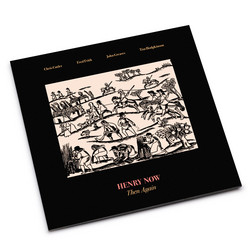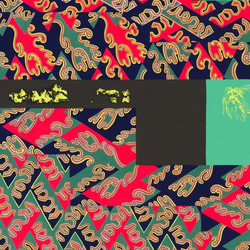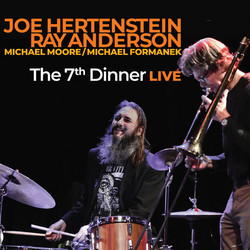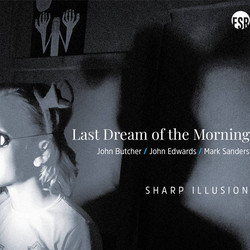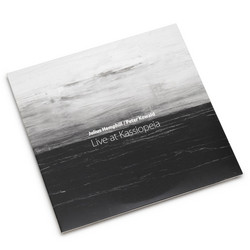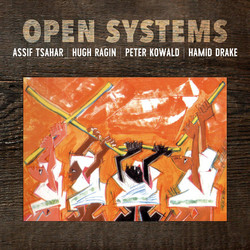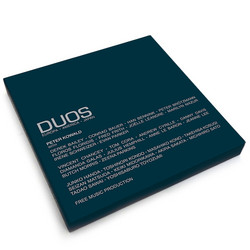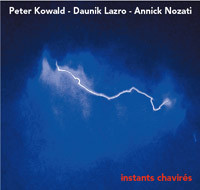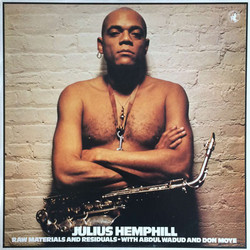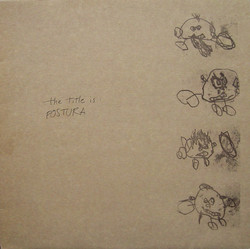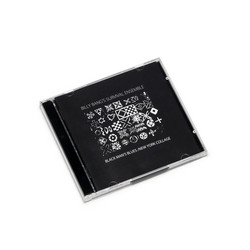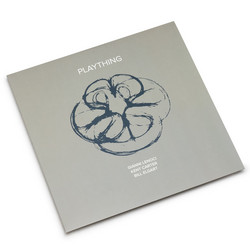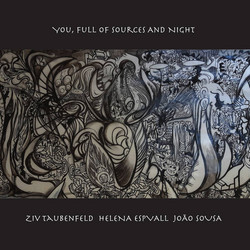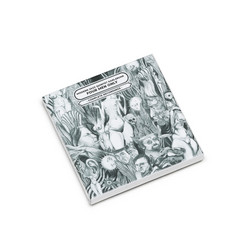We do require your explicit consent to save your cart and browsing history between visits. Read about cookies we use here.
* 2021 Stock * A never earlier released duo recording that was played back in 1987 at Kassiopeia, Wuppertal brings these two great musicians and composers together for this unique and unforgettable session. The late great saxophonist Julian Hemphill and bassist Peter Kowald ate their peak
Out of the blue comes this double disc set featuring two distinguished alumni, both sadly now departed, of two parallel streams of musical pioneering. German bassist Peter Kowald was one of the authors of European free improvisation. Though initially in the shadows of his more assertive compatriots, saxophonist Peter Brötzmann and pianist Alexander von Schlippenbach, he came into his own through giving full rein to his open spirit and almost obsessive desire to communicate, culminating in his Global Village concept and appearances with virtually every free jazz luminary. American saxophonist Julius Hemphill was one architect of the groundbreaking St Louis Black Artists Group, evincing a particular talent for fresh composition, a point pressed home by his justly lauded early masterpiece Dogon A.D. (reissued by International Phonograph in 2011), reissued on CD. However, he remains best known as a founder and prime composer for the World Saxophone Quartet (WSQ), instrumental in forging their distinctive style. Captured in a club (still extant) in Kowald's home town of Wuppertal in 1987, this live recording presents each man in an unaccompanied showcase on the first CD, before uniting them for three cuts on the second. Issued now for the first time, with no liners setting out background to the date, some context is needed. By 1987, Kowald had elevated his duet work to the highest level, roaming the world, seeking out unlikely collaborators in unfettered expression. Hemphill was without a longstanding outlet for his craft, having left the WSQ but yet to initiate his saxophone sextet. It is easy to imagine an impromptu duo date being engineered when the American was passing through the German lowlands. While Hemphill's three solo performances—each in the 6-7 minute range—are not blues-based they are definitely blues-tinged. He gives flowing interpretations of what are presumably his own works (all simply titled "Solo" on the sleeve), which bear his trademark of languid melodies which flirt with dissonance. He maintains focus through each; tuneful and swinging in tempo, at times recalling Ornette Coleman, just occasionally eliding into the falsetto register. Only one furious double time passage in "Solo I" and some coruscating runs in "Solo II" demonstrate his chops. There's a slightly grainy nasal quality to his tone as well as a slight pre-echo, probably an artefact stemming from the age of the tapes. Kowald pushes the possibilities inherent in his axe much more energetically towards the extremes in his 32 minute feature. Starting with a rippling muscular pizzicato, he contrasts deep darkly resonance with volatile bowing. At times he exploits the harmonics where his splintered vocalized inflections create the illusion of multiple voices. In addition he does actually make use of his voice, subtly blending the throat singing he had learned from Siberian collaborations with his arco technique, adding a fetching human vulnerability. Paired, it is intriguing to hear how they switch between the two home territories. As an improvised duet, they are much more on the bassist's turf, each reacting to the other in the moment, but they do also touch on jazz narratives, with Kowald walking his bass in tandem with Hemphill's soulful alto. Even here the German brings a new dimension with his unexpected twists and turns from outside the tradition. "Duo II" is the longest piece at 36 minutes, alternating between the two modes in unforced evolution. Thus a sequence of whistles and wavering saxophone squeals accompanies bowed overtones in an affecting melange, before giving way to an earthy cry with a slow, jazzy counterpoint. Hemphill even throws in a bebop quote towards the end. Overall the most worthwhile cut remains Kowald's solo, though even that struggles to sustain interest over the whole course. While the release doesn't illuminate either man's career, both clearly saw merit in the meeting: they reprised the arrangement three years later in Berlin, as evidenced by a track on Kowald's Duos America (FMP, 1990). Ultimately, this release provides a fascinating chronicle which surprises by its mere existence after all these years.
Related products
More by Julius Hemphill, Peter Kowald
More from NoBusiness Records
Become a member
Join us by becoming a Soundohm member. Members receive a 10% discount and Free Shipping Worldwide, periodic special promotions and free items.
Apply hereSoundohm is an international online mailorder that maintains a large inventory of several thousands of titles, specialized in Electronic/Avantgarde music and Sound Art. In our easy-to-navigate website it is possible to find the latest editions and the reissues, highly collectible original items, and in addition rare, out-of-print and sometime impossible-to-find artists’ records, multiples and limited gallery editions. The website is designed to offer cross references and additional information on each title, as well as sound clips to appreciate the music before buying it.
Soundohm is a trademark of Nube S.r.l.



